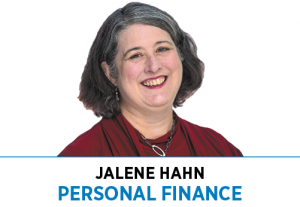Subscriber Benefit
As a subscriber you can listen to articles at work, in the car, or while you work out. Subscribe Now Why do we make dumb money mistakes? The easy answer is that we can’t help ourselves. We are evolutionarily programed to take shortcuts. Our brain is wired to be expedient. Expediency is not always rational.
Why do we make dumb money mistakes? The easy answer is that we can’t help ourselves. We are evolutionarily programed to take shortcuts. Our brain is wired to be expedient. Expediency is not always rational.
This irrational behavior is the underpinning of behavioral finance, the study of the influence of psychology on the behavior of investors. It focuses on the fact that investors are not always rational, have limits to their self-control and are influenced by their own biases.
When I was in business school, I was taught the efficient market hypothesis developed in the 1950s and 1960s by Eugene Fama. According to Fama’s theory, “Financial markets are efficient; investors make rational decisions; market participants are sophisticated, informed and act only on available information.”
Behavioral finance theory developed in the late 1970s and 1980s to provide insight into the way the human mind works. This research “identified pervasive, deep-seated, subconscious biases and heuristics that occur in human decision-making and revealed an entirely new perspective on why we behave as we do.” Behavioral finance theory treats investors as normal, not rational. It assumes investors have limits to their self-control, are influenced by biases and make cognitive errors that can lead to wrong decisions.
Biases are typically classified into three types: heuristics (shortcuts or rules of thumb), cognitive (faulty reasoning) or emotional (feelings, perceptions or beliefs). Emotional biases are deeply held and often difficult to mitigate. Researchers have identified at least 50 types of behavioral biases. Here are a few examples of each classification.
Heuristics
◗ Anchoring: inf luenced by first piece of information.
◗ Availability: easily accessible information—it’s everywhere.
◗ Similarity: “I’ve seen it before and know how to work with it.”
Cognitive
◗ Framing: how choices are presented.
◗ Mental accounting: placing different weight on sources of money.
◗ Overconfidence: overestimating one’s analytical skills and misinterpreting the accuracy of information. “I have an edge that you (and others) do not.”
Emotional
◗ Self-control or present bias: valuing the here and now.
◗ Herding: group think—fear of missing out.
◗ Paradox of choice: analysis paralysis with too many choices.
The first step to start being smarter about money is to be aware these biases exist. Awareness is the easy part; the harder part is to be able to take actions to overcome them. According to Warren Buffett, “Once you have ordinary intelligence, then what you need is the temperament to control urges that get others into trouble.”
One way to obtain this temperament is to put processes and structures in place to alleviate many of these biases. This is especially important when investment decisions are made under conditions of great uncertainty. Use audit trails, feedback, checklists and algorithms, and automate processes where possible. Focus on the process rather than the outcome. As hard as it is to do, sometimes the best course of action is no action.
In addition to putting structures in place, examine your behavioral tendencies that influence your financial decisions. Are you prone to fear of missing out; do you follow the latest investing trends? Do you let fear and greed lead you to hasty decisions?
If you work with a financial adviser, he or she might serve as an impartial third party. Part of that person’s job is to help you take the emotion out of investing. Also recognize that financial advisers are humans, too, and have their own shortcomings. Ask whether they have systems in place to counteract their own biases?
Remember to focus on the process and think long term. Behavioral finance teaches us to invest by preparing, planning and making sure we pre-commit. Know what to do during turbulent markets and then stick to the plan.•
__________
Hahn is a certified financial planner and owner of WWA Planning and Investments in Columbus. She can be reached at 812-379-1120 or [email protected].
Please enable JavaScript to view this content.
